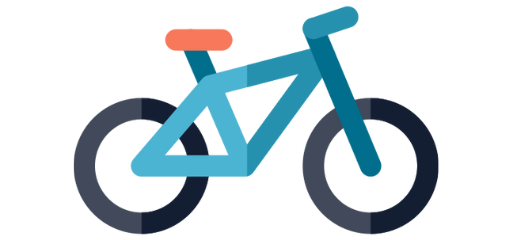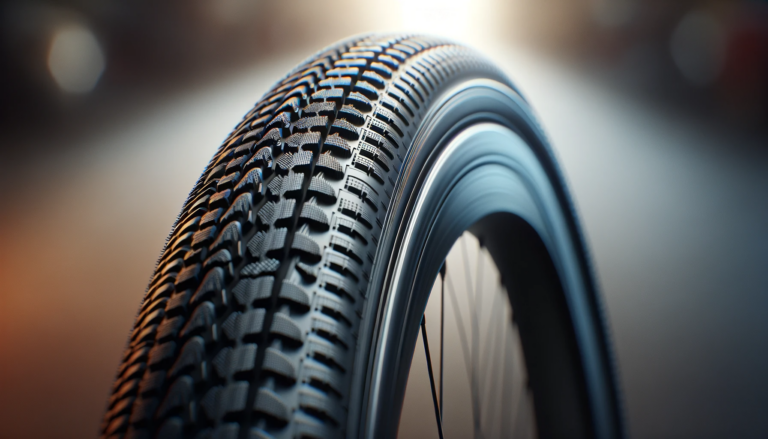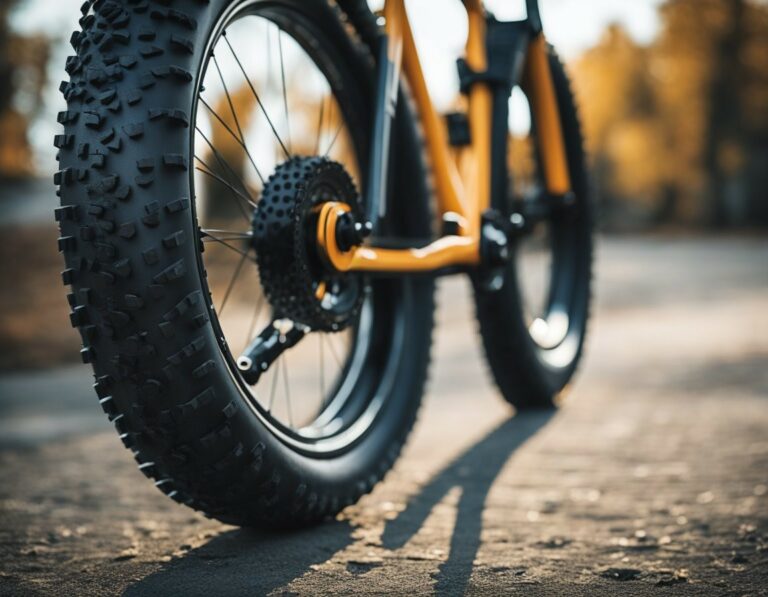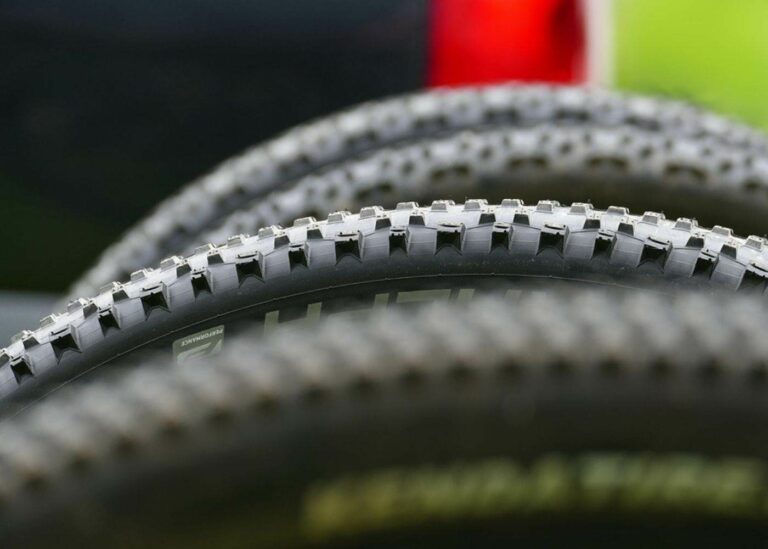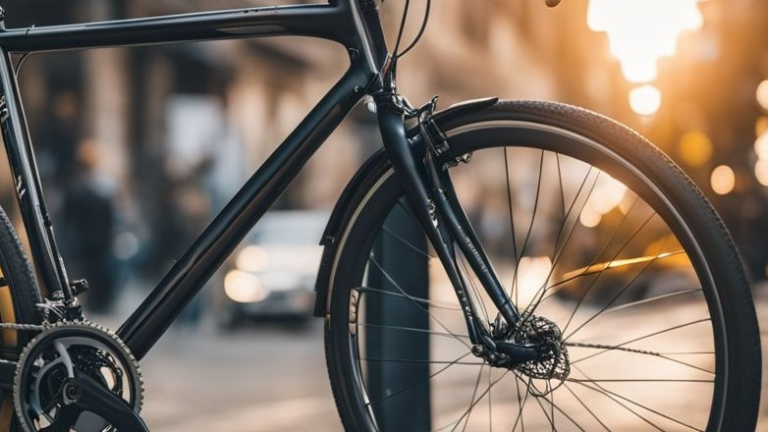Guide to Fat Bike Tires: Essential Tips for Optimal Performance
Fat bike tires, characterized by their wide dimensions and deep treads, enable riders to conquer snowy trails, sandy beaches, and muddy landscapes that would otherwise be challenging or impossible to traverse using conventional tires.
While fat bike tires share some similarities with typical mountain bike tires, key differences lie in their design and construction, which are specifically tailored to enhance traction, stability, and floatation on soft or loose surfaces.
As the popularity of fat bikes has grown, so too has the range of tire options available on the market.
Therefore, selecting the appropriate tires for one’s specific needs and riding conditions requires careful research and consideration.
Key Takeaways
- Fat bike tires offer versatility, allowing riders to conquer various terrains with ease.
- Understanding the unique design elements of fat bike tires is important to optimizing their performance.
- Careful consideration of available fat bike tire options ensures an enjoyable and efficient cycling experience.
Understanding Fat Bikes and Their Tires
Fat bikes have gained popularity in recent years for their distinct features and capabilities in various terrains and conditions. This section aims to provide insight into fat bikes and their tires, covering their distinctive features, the role of fat bike tires, and the various terrain and condition applications suitable for fat biking.
Distinctive Features of Fat Bikes
Fat bikes are a type of mountain bike with exceptionally wide tires, typically ranging from 3.8 inches to 5 inches in width. These wide tires allow for a larger contact area with the ground, providing increased traction and stability. Fat bikes often have wider rims, usually 65mm to 100mm, which support the large tire width.
The frame and fork of a fat bike are designed to accommodate these wide tires and ensure adequate clearance.
| Feature | Description | Benefit |
| Tire Width | Ranges from 3.8 to 5 inches | Provides increased traction and stability |
| Rim Width | Usually 65mm to 100mm | Supports the large tire width for better performance |
| Low Tire Pressure | Allows for pressures as low as 5 PSI | Enhances grip and provides a natural suspension effect |
The Role of Fat Bike Tires
The key feature of a fat bike is its wide tires, which play a significant role in the performance and comfort of fat biking. Wider tires allow for lower inflation pressures, resulting in a larger contact area with the ground. This increased contact area enhances traction, making it easier to navigate slippery or uneven surfaces.
Also, the low tire pressure provides a natural suspension effect, absorbing bumps and improving comfort while riding.
There are various types of fat bike tires available, catering to different riding styles and terrains. Tread patterns, tire width, and compound are some of the factors to consider when selecting the right fat bike tire for your specific needs.
Terrain and Condition Applications

One of the primary reasons for the popularity of fat bikes is their ability to handle a wide range of terrain and conditions. The wider tires and low inflation pressures of fat bikes allow them to excel on:
- Loose Surfaces: Fat bikes perform well on loose surfaces such as sand or gravel, where their wide tires provide excellent flotation and reduce the likelihood of sinking or digging in.
- Snow and Ice: Fat bikes were initially designed for riding on snow-covered trails. The large contact area of the tires gives riders better traction on slippery surfaces, making it possible to ride in winter conditions.
- Technical Trails: The improved traction and stability of fat bikes make them well-suited for navigating technical trails with rocks, roots, and other challenging features.
- Off-road Adventures: Fat bikes are ideal for exploring off the beaten path, enabling cyclists to tackle various terrains that may not be suitable for traditional mountain bikes. Furthermore, the increased comfort provided by the fat tires makes long off-road adventures more enjoyable.
While fat bikes may be heavier and less nimble than traditional mountain bikes, their unique capabilities in various terrains and conditions, and the comfort they provide, make them an exciting option for many riders.
Anatomy of Fat Bike Tires
Tire Dimensions
Fat bike tires have unique dimensions that set them apart from other types of bicycle tires. Their size significantly affects the bike’s performance, handling, and overall feel. The key elements of fat bike tire dimensions are the width and diameter.
Typical fat bike tires have a width range of 3.8 inches to 5 inches. Their larger size helps improve traction and stability, especially on rough or slippery terrain. It is important to understand tire sizing and width when choosing a tire for your fat bike.
Rim compatibility and size matching are important factors when selecting a tire. You should also ensure the tire width is compatible with the rim’s width. Wider rims generally provide better support for wider tires, especially at lower tire pressures.
Tread Patterns
Tread patterns play a key role in a fat bike tire’s performance and grip. Fat bike tires usually have large and widely spaced tread blocks to optimize traction on various surfaces, such as snow, sand, and mud.
Tire pressure greatly influences the tire’s contact with the ground and its effectiveness in various conditions. Most fat bikes have a recommended tire pressure range between 5-30 psi, with lower pressures used for softer and more uneven terrain.
Materials and Construction
The construction and materials of a fat bike tire impact its durability, performance, and weight. Many fat bike tires are made with high-quality rubber compounds and puncture-resistant casings. Some have tubeless-ready designs, which allow for even lower tire pressures and increased puncture resistance.
When choosing a fat bike tire, consider the material’s effect on the tire’s performance and longevity.
| Component | Function | Considerations |
| Tire Width and Diameter | Affects traction and bike handling | Ensure compatibility with rim size |
| Tread Patterns | Determines grip on various surfaces | Select based on terrain (snow, sand, mud) |
| Materials and Construction | Influences durability and performance | Look for puncture-resistant casings and quality rubber |
Fat bike tire anatomy covers important aspects such as dimensions, tread patterns, and materials. These factors contribute to the tire’s performance in various conditions, making it easy for riders to understand and choose the correct tire for their fat bike.
The Science of Tire Pressure
Importance of Correct Tire Pressure
Maintaining the correct tire pressure is important for optimal performance and comfort while riding a fat bike. The appropriate pressure depends on factors such as the rider’s weight, terrain, and personal preferences. When the tire pressure is accurately set, it can enhance traction, reduce rolling resistance, and increase the bike’s stability, providing an enjoyable and safe riding experience.
Tire pressure is typically measured in pounds per square inch (PSI). For fat bikes, an ideal starting pressure ranges from 5 to 15 PSI, depending on the tire size and conditions. A simple trial-and-error method helps determine the most suitable pressure for a specific situation.
It is important to remember that under-inflated tires can increase the risk of pinch flats, while over-inflated ones might cause a harsh ride and poor traction.
Effects of Pressure on Traction and Handling
Tire pressure significantly impacts the bike’s traction and handling. Lower pressure allows the tire to conform better to the terrain, increasing the contact area with the ground and providing better grip. This is particularly helpful when riding on snow, sand, or other loose surfaces, where it enables the tire to ‘float’ while preventing it from sinking too much.
Conversely, higher pressure leads to a smaller contact area reducing traction, but it can improve the bike’s rolling efficiency on hard surfaces or when cornering at high speeds. It is necessary to strike a balance between traction and rolling efficiency to achieve the desired handling and performance.
Rider weight is another factor influencing the effects of tire pressure on traction and handling. Heavier riders may require a slightly higher pressure to support their weight without causing tire deformation, while lighter riders may benefit from lower pressure for improved comfort and traction.
Tire pressure plays a significant role in a fat bike’s performance and handling. Experimenting with different pressures and considering factors such as rider weight and terrain can help find the optimal setup for a comfortable and efficient ride.
Tube vs. Tubeless Systems

Advantages and Disadvantages of Each System
When it comes to fat bike tires, there are two main systems to consider: tube and tubeless. Both have their advantages and disadvantages, depending on the rider’s needs and preferences.
Tube System
The traditional tube system consists of a separate inner tube within the tire. This setup is generally less expensive and makes it easier to repair punctures. To fix a flat, simply remove the tube, patch it or replace it, and then reinstall.
Some advantages of using tubes in fat bike tires include:
- Lower cost
- Easier to repair punctures
- Compatibility with most rims
There are some disadvantages to tubes as well:
- Increased likelihood of punctures
- Added weight due to the inner tube
- Possible pinch flats if tire pressure is too low
Tubeless System
On the other hand, tubeless tires remove the need for an inner tube. Instead, a sealant is applied inside the tire, creating an airtight seal between the tire and the rim.
The benefits of using a tubeless system on fat bike tires include:
- Reduced risk of punctures
- Improved ride quality due to lower tire pressures
- Possible weight savings without the inner tube
There are, however, some drawbacks to tubeless systems:
- More complicated setup and maintenance
- Higher initial cost for conversion and sealant
- Compatibility with limited rim types
Both tube and tubeless systems have their pros and cons when it comes to fat bike tires. Riders should consider their personal preferences, budgets, and overall priorities when choosing between these systems.
Selecting the Right Fat Bike Tires

Brand and Model Overview
When looking for the perfect fat bike tires, it’s needed to be aware of the top brands and models available in the market. Some of the well-known brands include Surly, Maxxis, and Schwalbe. These brands offer a wide range of high-quality fat bike tires with varying price, weight, and size options.
Comparing performance and price among these brands can help you make an informed decision when purchasing your next set of tires.
Factors to Consider When Choosing Tires
- Price: The cost of fat bike tires can vary significantly depending on the brand, model, and features. It’s important to set a budget and find the best tires within that range without sacrificing quality. Remember that sometimes it’s worth investing in higher-priced tires for better performance and durability.
- Weight: The weight of fat bike tires plays a big role in how the bike handles and feels. Lighter tires typically offer better responsiveness and acceleration, while heavier ones provide increased traction and stability. Consider your riding style and conditions when deciding on tire weight.
- Size: Fat bike tires come in various widths, usually ranging from 3.8 to 5 inches. Wider tires provide more flotation on soft surfaces, while narrower ones offer better rolling efficiency for mixed terrain. Choose the size that best suits your typical riding conditions.
- Riding Style: Your riding style is an one of the key factors in selecting the right fat bike tires. Aggressive riders who tackle rough terrain may benefit from more robust and durable tires. On the other hand, casual riders may prioritize comfort and stability.
- Condition: The type of terrain and conditions you frequently encounter on your rides will influence your choice of fat bike tires. Tires with deep and aggressive treads perform well in loose snow, sand, and muddy trails, while low-profile tread patterns are better suited for hardpack and more moderate conditions.
Finding the right fat bike tires depends on factors such as price, weight, size, riding style, and conditions. By highlighting top brands and models and considering your specific needs, you’ll be able to select the perfect fat bike tires for your next adventure.
Maintenance, Care, and Troubleshooting

Fat bike tires are designed to provide optimal traction on various terrains, but they also require proper maintenance to ensure longevity and performance. It is important to regularly inspect your fat bike tires for any signs of wear or damage, and follow a diligent care routine.
To maintain your fat bike tires at their best, it is best to keep them inflated at the recommended tire pressure. This can greatly impact their comfort and performance. Another thing is, you must frequently check the tire tubes for punctures or leaks. See that the tire valves are functioning well to avoid any air loss.
Here are a few tips for maintaining fat bike tires:
- Clean your fat bike tires regularly with a soft brush and mild soapy water, especially after long rides or exposure to mud and debris.
- Inspect your tires for cuts, punctures, or embedded objects that could lead to a flat or damaged tire.
- Rotate your tires periodically to ensure even wear and extend their lifespan.
- Store your fat bike in a dry, cool environment to avoid exposure to the elements or harmful chemicals.
- Replace the tire tubes if they are damaged or excessively worn out.
In case of a puncture or other issue, it’s important to know how to troubleshoot effectively. A basic understanding of tire repair can save you time, money, and frustration. If a flat occurs, first locate the puncture, remove the tire, and patch the tire tube or replace it if necessary.
Inflate the tire to the recommended pressure and reinstall it on the wheel. Keep a tire repair kit and a portable pump with you to address any unexpected issues during your rides.
Remember, proper maintenance, care, and troubleshooting of your fat bike tires can significantly impact your overall riding experience and extend the life of your tires. With these preventive measures and regular check-ups, you can enjoy worry-free rides on various terrains.
Frequently Asked Questions

How do I select the right fat bike tire size?
The right fat bike tire size is based on your riding style, terrain, and personal preferences. Generally, wider tires (4 to 5 inches) provide more flotation and grip on soft surfaces like snow and sand, while narrower tires (3 to 4 inches) can offer increased rolling efficiency on hard-packed surfaces. Experiment with different tire widths based on your needs and consider factors such as weight and the compatibility of your bike frame and fork.
What is the optimal wheel size for fat bikes?
Fat bikes often utilize two primary wheel sizes: 26 inches and 27.5 inches. The 26-inch wheels are more common and provide better floatation, while the 27.5-inch wheels tend to offer better rolling efficiency and maneuverability. The optimal wheel size for your fat bike depends on your riding preferences, the terrain, and the specific geometry of your bike.
Which fat bike brands offer the best tire options?
Various fat bike brands offer high-quality tire options for different types of riders and conditions. Some popular and reputable brands include Maxxis, Schwalbe, Surly, 45NRTH, and Terrene. Research and compare the features, performance, and durability of each brand’s offerings to find the best option for your riding needs and budget.
Are budget fat bikes a good choice for beginners?
Budget fat bikes can be an excellent choice for beginners looking to experience the unique features and versatility of fat biking without breaking the bank. Many budget options provide beginner-friendly geometry and quality components, enabling riders to develop their skills and later move on to more advanced models if desired.
What are the benefits of Maxxis fat bike tires?
Maxxis fat bike tires are highly regarded for their durability, varied tread patterns, and performance on different terrains. They often feature puncture-resistant casings, specific rubber compounds for enhanced grip, and reliable tubeless-ready options. Maxxis offers a wide range of fat bike tire models suitable for various riding conditions and styles, making them a popular choice among fat bike enthusiasts.
How does fat bike tire performance vary by brand?
Different tire brands may prioritize various factors such as grip, rolling resistance, weight, durability, and puncture resistance. The performance of fat bike tires often varies from brand to brand and even between different models within a brand’s lineup. It’s significant to research and test multiple options to find the best-performing tire for your riding style, terrain, and bike setup.
